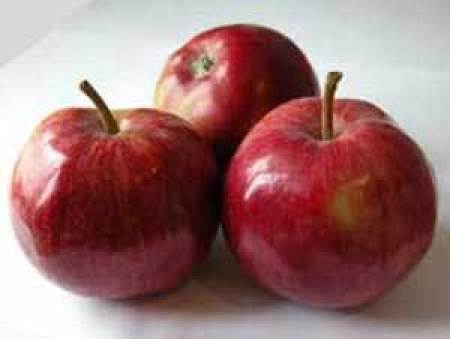
Select quality, bare-root, dormant trees that are at least 1 to 2 years old and cultivated for your specific zone. Disease resistant varieties are available that will minimize common problems such as apple scab. Avoid buying whatever is available at local discount garden centers. These trees are unusually common commercial cultivars selected for their ability to stand up to shipping, and may not be suited to local growing conditions.
Apple trees need full sun and moderately rich soil with a pH of 6.5 to 6.8 and good air circulation. Avoid low-lying areas where water tends to stand after it rains or where frost pockets develop. Do not plant new trees where apple trees grew previously. Ideally, the soil should be prepared a season in advance by removing any perennial weeds and planting a cover crop like sweet clover or buckwheat over the planting area.
Spring planting is recommended in central and northern zones and fall planting is best in areas where winter weather is mild. Trees should be spaced 20 to 25 ft. apart (dwarf varieties 15 to 20 ft. apart). Trees should be watered thoroughly during and after planting and mulched with 8 to 10 inches of organic material after planting, keeping the 3 to 5 inch area directly around the base of the trunk bare.
Young trees should receive between 1 to 2 inches of water per week throughout the growing season and into fall until the ground freezes to ensure they establish good roots. Start to train trees in a central leader (one main trunk with many side branches) in the first year. Prune them annually in the early spring while still dormant and check them in the spring and fall for fruit pests and disease.
Apples can be harvested from mid-summer to late fall depending on the variety and growing zone. To harvest fruit, avoid removing the stem by cupping the apple in your hand and tilting it upward while twisting to separate the spur from the branch. Apples keep best long-term when stored at 80 to 90% humidity at temperatures of 32 to 40F (slightly colder than a refrigerator). Store them away from root vegetables-they release ethylene gas which makes root crops taste bitter and reduces their storage life.

Add your voice! Click below to comment. ThriftyFun is powered by your wisdom!
We really appreciate your article! We live in the Seattle/Tacoma of Washington State & as you probably know, Western, WA has much less sunshine & cooler summer weather that Eastern, WA. Can you tell me if I can grow Granny Smith apples? Also, what other apples are kind of tart (like Grannies only not quite as tart). How about Braeburns? Are they easy to grow? I'm looking for something shade tolerant, we have wet soil & also need something bug resistant. Thank you!
I would check online on the Washington State University website. WSU has developed strains that are resistant to our western Washington weather. They developed the Frost Peach, which I have grown in Seattle, with terrific results.
Add your voice! Click below to comment. ThriftyFun is powered by your wisdom!